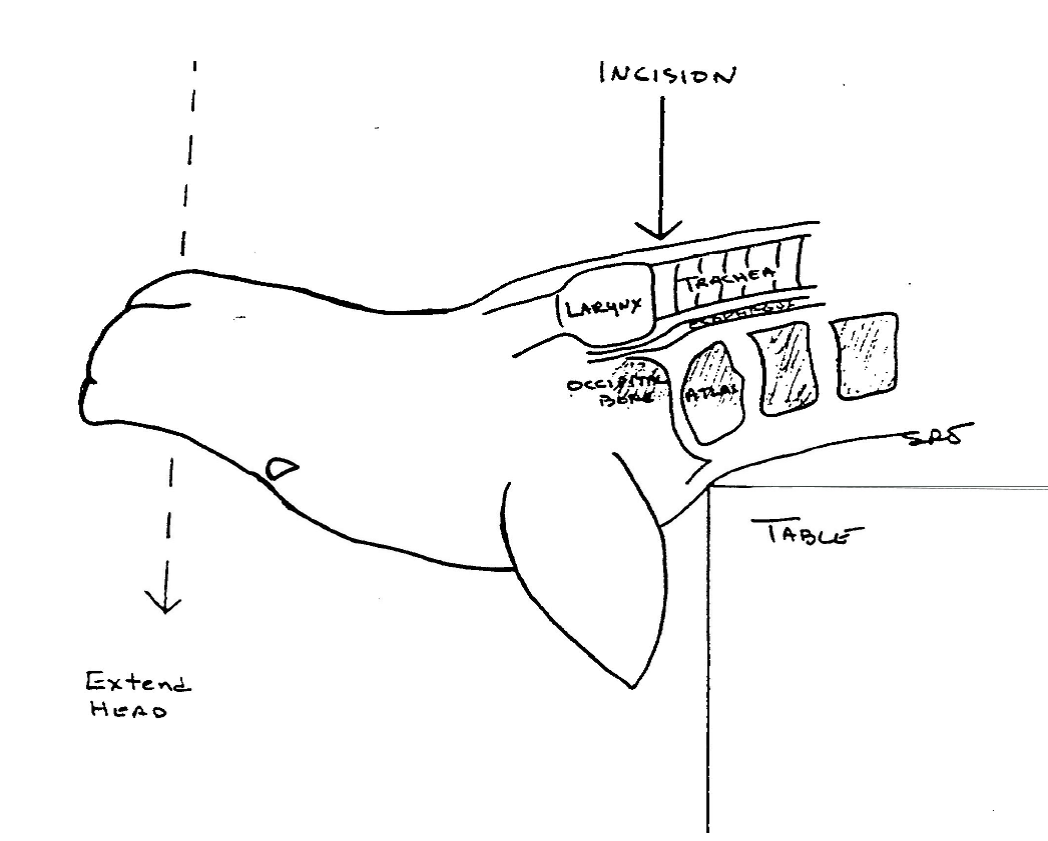SUPPLIES
- Sharp knife
- Optional: sharp hacksaw, dehorner, lopping shears, pruning shears, or brush cutters.
- Protective clothing:
- Waterproof gloves (disposable)
- Mask (disposable)
- Safety glasses or goggles
- Designated lab coat or coveralls, and/or waterproof apron
- Cleaning supplies
- Soap (detergent)
- Disinfectant
- Paper towels
- Plastic trash bag
It is suggested that the procedure be done on a layer of newspaper to absorb any fluid leakage during the procedure.
Do NOT use power tools for this procedure due to the risk of flying debris and/or fluids.
SUGGESTED PROCEDURE
Please use the technique with which you are most familiar and feel most comfortable.
- Lay deceased animal on its back and extend the head by pushing the top of the nose toward the ground, or bend neck back over edge of table (see diagram).
- Locate the larynx. Using a sharp knife, make an incision through the skin immediately behind the larynx, and continue cutting down through the trachea and esophagus to the backbone.
- If you have cut in the correct place, you can identify the membrane covering the spinal cord between the first vertebrae (atlas) and the skull (occipital bone). The joint made by these two bones can be visualized and palpated as the animal’s head is flexed and extended.
- Disarticulate the atlanto-occipital joint. It is possible to dissect the ligaments connecting this joint, but probably easier and faster to hyperextend the head and manually tear the ligaments. You will hear and feel a snap when this is accomplished.
- Alternatively, you can cut through the vertebra instead of disarticulating the joint. After cutting down to the backbone, use shears or a hacksaw to cut through the first vertebra.
- Any remaining muscle and skin can be cut with a knife to completely free the head from the body.
CLEAN UP
- Instruments and contaminated surfaces should be washed with detergent and water, and disinfected. Rabies virus is very liable in the environment and is easily killed by most routine disinfectants when they are applied to a clean surface.
- The body of the animal should be incinerated or properly disposed of according to local guidelines and regulations.
Diagram of incision site and positioning to facilitate removal of the head of a deceased small animal for rabies testing:
